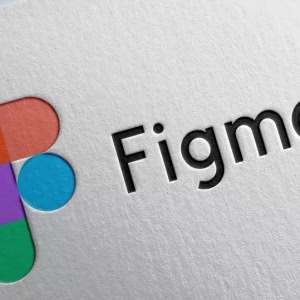OpenAI, a trailblazing startup, has unveiled its newest creation: the GPT-4o model. Along with this exciting release, they’ve also shared a comprehensive safety assessment, giving us an insightful look at the model’s development and potential risks. In their recently published research document, aptly named the GPT-4o System Card, OpenAI transparently outlines the safety measures and risk evaluations considered before introducing this innovative model to the world. The assessment concludes that the GPT-4o model presents a medium risk, a thoughtful and measured evaluation. This balanced risk assessment suggests that while the model offers incredible potential, there are also important considerations and possible challenges to be aware of. The medium risk rating serves as a thoughtful reminder that with great technological power comes great responsibility, and OpenAI is taking a proactive approach to ensure a safe and beneficial future for all.
The company’s transparent disclosure of the GPT-4o model’s risk potential showcases its commitment to ethical AI development and a bright future for human-AI collaboration. OpenAI’s thorough safety assessment of its GPT-4o model highlights a responsible approach to AI development, ensuring that potential risks are carefully evaluated and addressed. This medium-risk rating for the GPT-4o is a reminder of the thoughtful balance needed in the AI industry, and OpenAI is leading the way with its proactive safety measures.
GPT-4o: A Medium Risk Model Unveiled
The highly anticipated GPT-4o model was unveiled to the public earlier this year in May. In the lead-up to its release, OpenAI wisely employed a group of external security experts, known as “red teamers,” to thoroughly scrutinize the model for any potential risks and weaknesses. This standard practice is an essential step to ensure the model’s safety and effectiveness. The dedicated team of red-teamers meticulously examined a myriad of potential risks and dangers, including the unauthorized replication of individuals’ voices, the generation of explicit or violent content, and the reproduction of copyrighted audio material. Their diligent work provides valuable insights into the model’s performance and potential pitfalls. Now, OpenAI is ready to share the results of this extensive red-teaming process, offering a transparent view of GPT-4o’s capabilities and limitations.

The verdict? GPT-4o is medium risk. While it has impressive capabilities, there are certain areas where caution is warranted. The model can be extremely helpful with its advanced features, but it is important to be vigilant about potential issues that may arise. With this knowledge, users can utilize GPT-4o effectively while remaining aware of its potential challenges.
OpenAI’s GPT-4o: A Balanced Blend of Benefits and Risks
The highly anticipated language model, GPT-4o, from OpenAI has been deemed a medium risk proposition by researchers according to their own comprehensive framework. This careful evaluation considered various critical aspects, including cybersecurity, biological threats, persuasion, and model autonomy. While most categories presented a low-risk assessment, the area of persuasion caught the attention of researchers. They discovered that, on certain occasions, GPT-4o’s writing samples could be surprisingly effective at influencing readers’ viewpoints, even outperforming human-written text in terms of swaying power. However, it’s important to note that the model’s overall persuasiveness was not consistently higher than that of human writing. This intriguing finding highlights the need for further exploration and a cautious approach as we navigate the potential benefits and challenges presented by this innovative technology. When is said GPT-4o is medium risk aptly summarizes this complex situation, reminding us that while GPT-4o offers exciting opportunities, it also warrants vigilant monitoring and ethical considerations to ensure its responsible utilization.
OpenAI Spokesperson Explains System Card Preparations
An OpenAI spokesperson, Lindsay McCallum Rémy, revealed intriguing details about the careful preparations behind the system card. She explained that it wasn’t just an internal team diligently working on preparedness evaluations but also external testers who played a vital role. The external testers, known as Model Evaluation and Threat Research (METR) and Apollo Research, are experts in building evaluations specifically for AI systems, ensuring GPT-4o is medium risk. Their contributions are publicly acknowledged on OpenAI’s website, showcasing the company’s transparency and commitment to safety.
Rémy emphasized the comprehensive nature of these evaluations, which thoroughly assess the AI system’s potential risks and preparedness. By involving external experts, OpenAI ensures a diverse range of perspectives and expertise, mitigating biases and potential blind spots. This collaborative effort underscores the company’s dedication to responsible AI development and deployment, prioritizing safety and ethical considerations in their cutting-edge technology.
The spokesperson’s insights provide a behind-the-scenes look at the meticulous planning and collaboration involved in creating AI systems. It highlights the importance of involving multiple stakeholders to address potential risks effectively. This transparent approach builds trust and assures the public that OpenAI is committed to navigating the complexities of AI technology responsibly.
OpenAI’s Timely Release of the GPT-4o System Card
OpenAI has a history of releasing system cards for its language models, including notable releases such as GPT-4 and the visually-enhanced GPT-4 with Vision. Now, with the release of the GPT-4o system card, the company is addressing growing concerns about its safety standards. This release couldn’t come at a more crucial time, as OpenAI has faced intense and relentless criticism from various quarters, including its own employees and state senators, regarding the safety of its AI technology. Just prior to the release of the GPT-4o system card, an exclusive report highlighted an open letter from a senator expressing concerns. The release of this particular system card is especially significant as it coincides with growing concerns and criticism regarding the potential risks associated with AI technology. The card itself provides an overview of the model’s capabilities and potential risks, with a focus on its medium risk nature. GPT-4o is medium risk, and OpenAI wants to ensure that its capabilities and limitations are well-understood by the public. This transparent approach is a step towards addressing the concerns raised by critics and assuring the public that AI technology can be developed and deployed safely.
Elizabeth Warren and Lori Trahan Raise Concerns About OpenAI’s GPT-4 Medium Risk
Two prominent US politicians, Senator Elizabeth Warren and Representative Lori Trahan, have very recently and openly questioned the ethics and safety procedures of OpenAI. The politicians have some serious and valid concerns about the company’s treatment of whistleblowers and its overall approach to safety reviews. This is a very important and worrying issue that has already caused some major issues within the company. For example, in 2023, CEO Sam Altman was briefly removed from his position by the board due to their very strong concerns about safety. Additionally, a key safety executive left the company, claiming that OpenAI had neglected safety culture and processes in favor of releasing new and shiny products. This is a shocking revelation that raises a lot of red flags and has prompted the politicians to take action. The letter from Senator Warren and Representative Trahan outlines these issues and more, highlighting the very real risks associated with AI technology and the potential consequences of putting profit before people. It is crucial that companies like OpenAI prioritize safety and ethical practices, especially when dealing with powerful tools like GPT-4o, which is medium risk and could potentially cause harm if misused or neglected. The politicians’ intervention is a timely reminder that AI companies must be held accountable and that the safety of the public must always come first.
The Perils of AI: GPT-4o is Medium Risk
As we approach another pivotal US presidential election, OpenAI has unveiled a powerful new multimodal model. This cutting-edge technology is undoubtedly impressive, but we must also consider the potential risks it carries. The company itself acknowledges the possibility of misuse, with malicious actors potentially exploiting the model or inadvertently spreading misinformation. This is a very real medium-risk scenario that we cannot afford to ignore. The model’s capacity for understanding and generating diverse content is undeniably impressive, but it also means that it could be manipulated to spread false or harmful information. While OpenAI is taking proactive steps to prevent misuse, the very nature of this technology means that it is always going to be a delicate balancing act.

As we said earlier, “GPT-4o is medium risk,” it highlights the need for vigilance and responsible use of this exciting new technology. While it offers incredible opportunities, we must also be aware of the potential pitfalls and take steps to mitigate them. The race for AI advancement must always be balanced with caution to ensure that these powerful tools are used for the betterment of society, not to its detriment.
The GPT-4o System: Managing Risks and Transparency
There have been numerous calls for greater transparency from OpenAI, and rightfully so. After all, the training data and safety testing processes of language models like GPT-4o are matters of public interest, especially given their potential impact on society. Located in California, OpenAI and other prominent AI labs are facing growing pressure for increased accountability. State Senator Scott Wiener is championing a bill to regulate large language models, which includes provisions to hold companies legally responsible if their AI technologies are misused. If enacted, this legislation would require OpenAI’s cutting-edge models, including the GPT-4o is medium risk, to undergo rigorous state-mandated risk assessments before being released for public use.
While OpenAI has engaged external red teamers and testers to evaluate their models, there is still a significant reliance on the company to conduct self-evaluations. This dynamic underscores the critical need for transparency in their processes and findings. The public deserves to know the details of how these language models are trained and tested for safety, and it is encouraging to see lawmakers taking steps to ensure this level of accountability. As the capabilities of AI continue to advance, so too must our efforts to understand and manage the associated risks.













